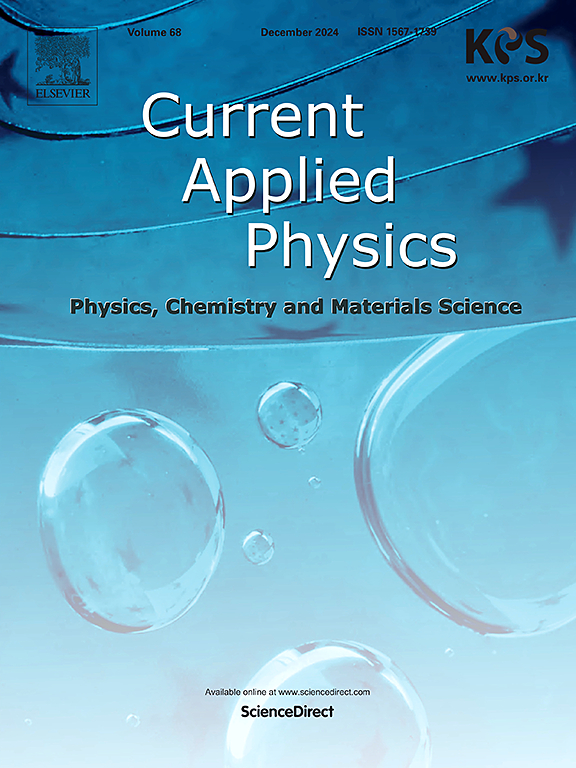Mechanical properties and deformation characteristic of few-layer gold nanolayers
IF 3.1
4区 物理与天体物理
Q3 MATERIALS SCIENCE, MULTIDISCIPLINARY
引用次数: 0
Abstract
This study investigates the mechanical properties and deformation mechanisms of few-layer gold nanolayers using molecular dynamics simulations under varying layer numbers, temperatures, and strain rates. Results show that tensile strength and Young's modulus increase with more layers, with 3- to 5-layer samples undergoing a strain-sensitive phase transition that enhances strength. Dislocation formation occurs only in the 4- and 5-layer samples, while 1- and 2-layer samples maintain a stable, amorphous structure. Tensile strength decreases with higher temperatures due to thermal softening. Strain rate strongly influences stress values and yield stress, particularly in the 1- and 2-layer samples. The Zerilli-Armstrong and Power Law models predict yield stress at quasi-static rates, showing an overall increase with strain rate.

少层金纳米层的力学性能及变形特性
本研究利用分子动力学模拟研究了不同层数、温度和应变速率下的少层金纳米层的力学性能和变形机制。结果表明,拉伸强度和杨氏模量随层数的增加而增加,3 ~ 5层试样发生应变敏感相变,强度增强。位错形成仅发生在4层和5层样品中,而1层和2层样品保持稳定的非晶态结构。由于热软化,拉伸强度随温度升高而降低。应变速率强烈影响应力值和屈服应力,特别是在1层和2层样品中。zerill - armstrong和Power Law模型以准静态速率预测屈服应力,显示整体随应变速率增加。
本文章由计算机程序翻译,如有差异,请以英文原文为准。
求助全文
约1分钟内获得全文
求助全文
来源期刊

Current Applied Physics
物理-材料科学:综合
CiteScore
4.80
自引率
0.00%
发文量
213
审稿时长
33 days
期刊介绍:
Current Applied Physics (Curr. Appl. Phys.) is a monthly published international journal covering all the fields of applied science investigating the physics of the advanced materials for future applications.
Other areas covered: Experimental and theoretical aspects of advanced materials and devices dealing with synthesis or structural chemistry, physical and electronic properties, photonics, engineering applications, and uniquely pertinent measurement or analytical techniques.
Current Applied Physics, published since 2001, covers physics, chemistry and materials science, including bio-materials, with their engineering aspects. It is a truly interdisciplinary journal opening a forum for scientists of all related fields, a unique point of the journal discriminating it from other worldwide and/or Pacific Rim applied physics journals.
Regular research papers, letters and review articles with contents meeting the scope of the journal will be considered for publication after peer review.
The Journal is owned by the Korean Physical Society.
 求助内容:
求助内容: 应助结果提醒方式:
应助结果提醒方式:


